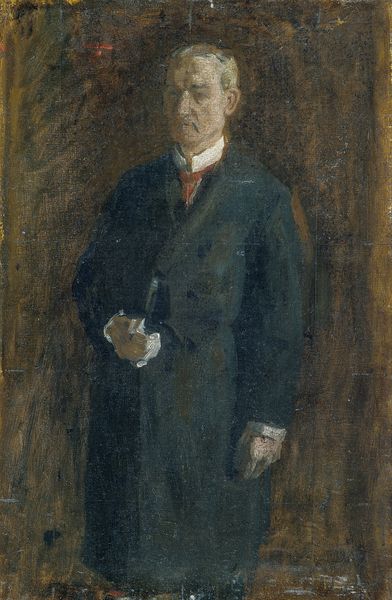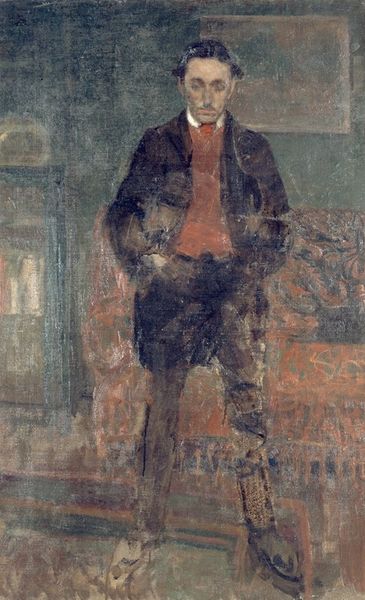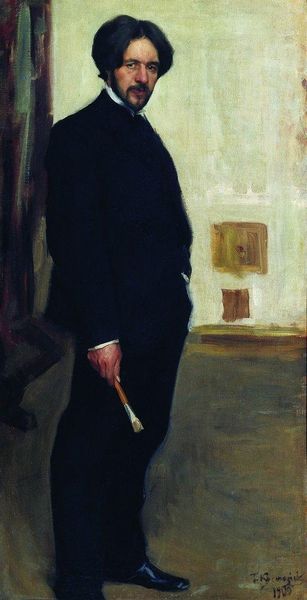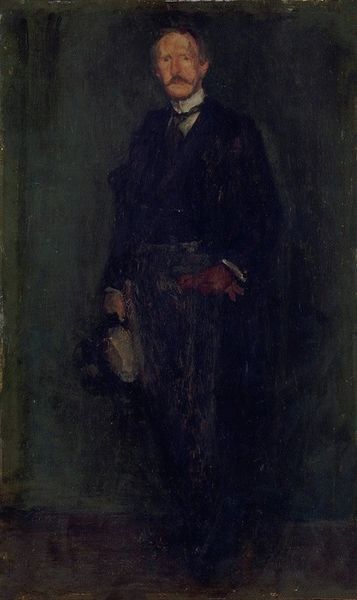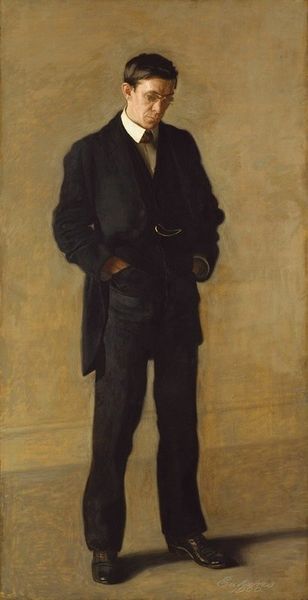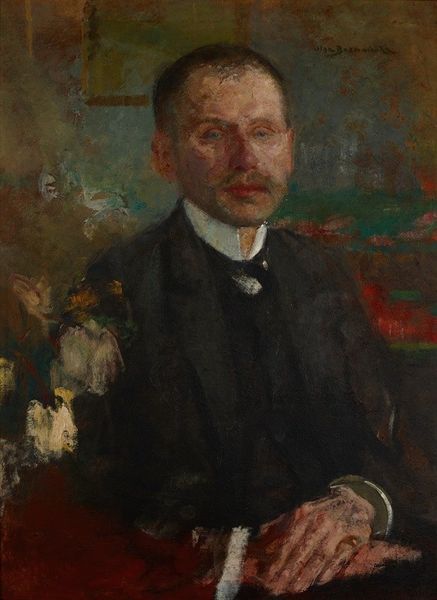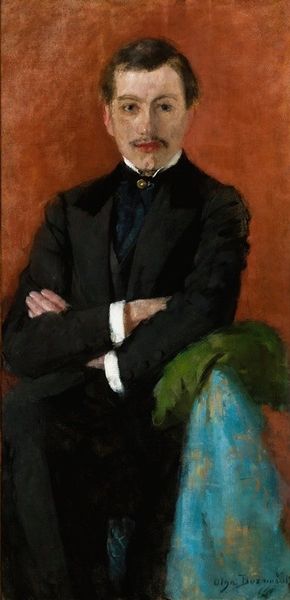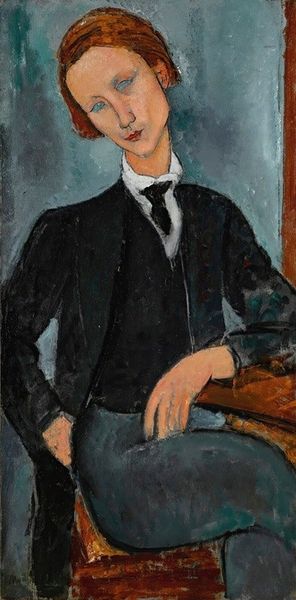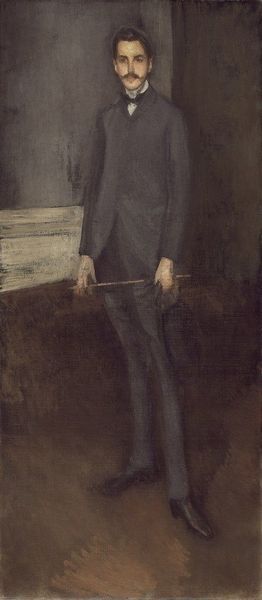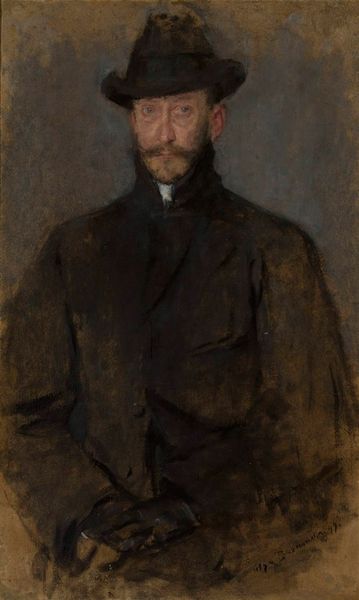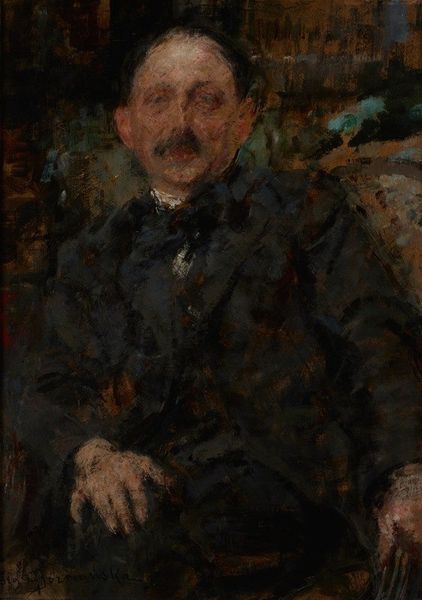
painting, oil-paint, impasto
#
portrait
#
figurative
#
painting
#
oil-paint
#
painted
#
figuration
#
oil painting
#
impasto
#
portrait head and shoulder
#
intimism
#
underpainting
#
painting painterly
#
symbolism
#
portrait art
#
realism
Copyright: Public Domain: Artvee
Curator: This is Olga Boznanska’s "Portrait of a Young Man in Black," painted around 1900 using oil paint, a beautiful example of turn-of-the-century portraiture. Editor: There's a melancholy here, isn’t there? The dark palette, the sitter's introspective gaze, even the loose brushwork seems to contribute to a feeling of quiet unease, despite the clear affluence signaled by the subject’s clothes. Curator: Yes, Boznanska certainly uses symbolism here to convey psychological depth. Black, of course, can represent mourning or seriousness, and it shrouds him. His pose feels restrained, with hands clasped, almost guarded, which can signify control, or repressed emotion, which in turn also communicates grief, pain and loss. Editor: And the clothing itself speaks volumes. A well-tailored suit was a potent symbol of bourgeois respectability, wasn't it? Yet the subdued colors push back on overt displays of wealth. There's a tension between conformity and individuality present. Are we seeing the constraints placed on young men of that era? Curator: Perhaps. And don’t forget that clothing can symbolize belonging and acceptance. Looking more closely, Boznanska uses visible brushstrokes and an impasto technique to capture the textures of his clothing; there's an almost tangible quality that links to realism but it is more likely she is conveying a hidden sense of internal turmoil. It highlights emotion during an age in which these expressions were expected to be carefully regulated, which in turns further supports and reveals the sense of control communicated by his restrained hands. Editor: Absolutely. Thinking about that regulation—that expectation of male stoicism in the Edwardian era—this painting becomes more than just a portrait. It's a commentary on the societal pressures to conform, the unspoken burdens carried by men of privilege. His body language screams containment, or forced obedience. Curator: And the subtle details—the underpainting showing through—it invites us to look beyond the surface and consider the complexities beneath. What expectations were placed on him by his class? His family? Even by the constraints of the time. Boznanska has encoded social meanings into the color. The darkness here also echoes, of course, Victorian morbidity around loss and death which might indicate this subject could be the subject of loss. Editor: It's a really insightful work, highlighting the internal struggles of the subject in an expressive way. Considering the time of production we begin to question male expectations across different social strata; in what ways would it contrast or remain similar across class divides? Food for thought. Curator: Yes, it certainly provides that and a lot to think about with all the symbolism Boznanska employs to capture this interesting character study.
Comments
No comments
Be the first to comment and join the conversation on the ultimate creative platform.


